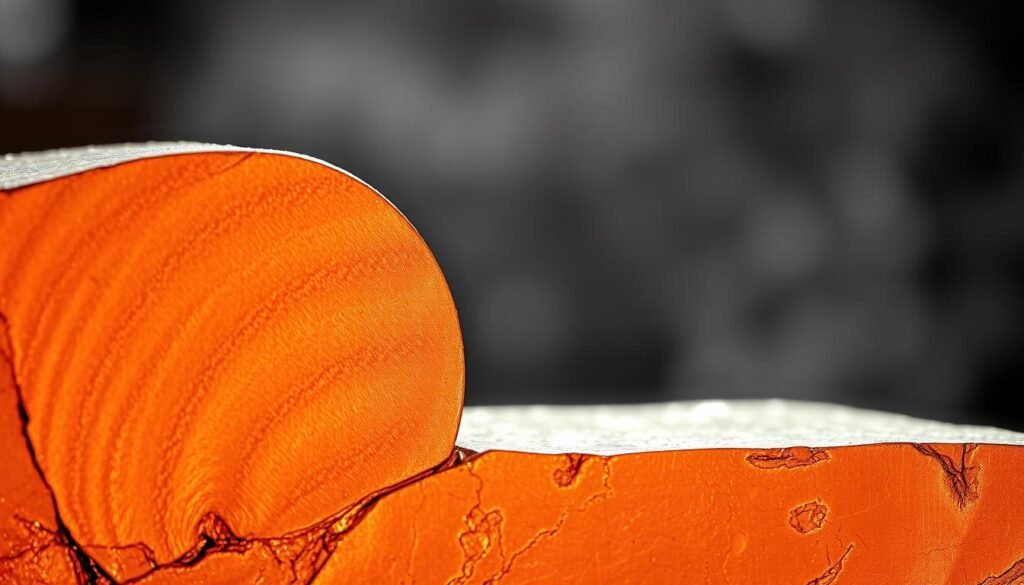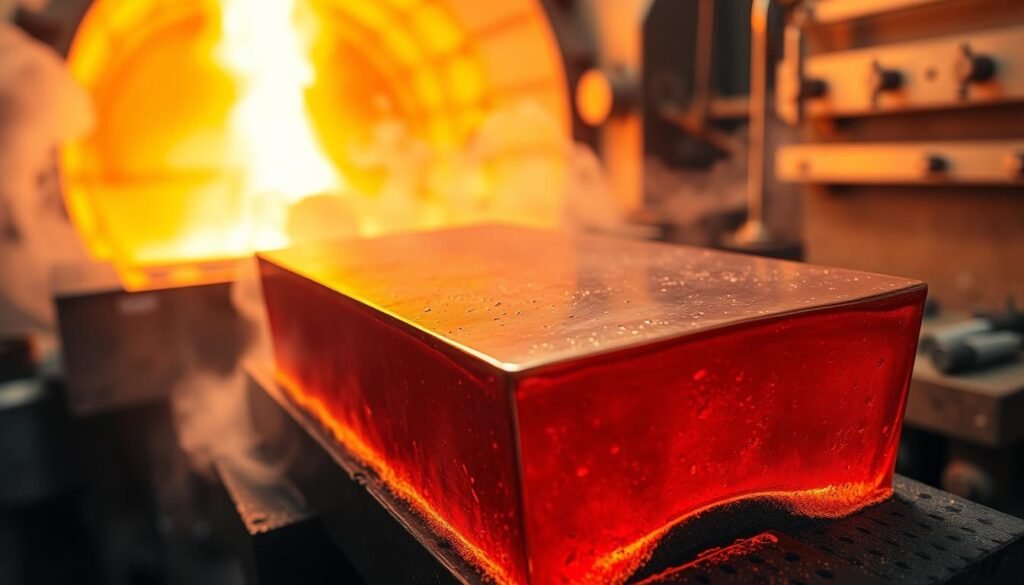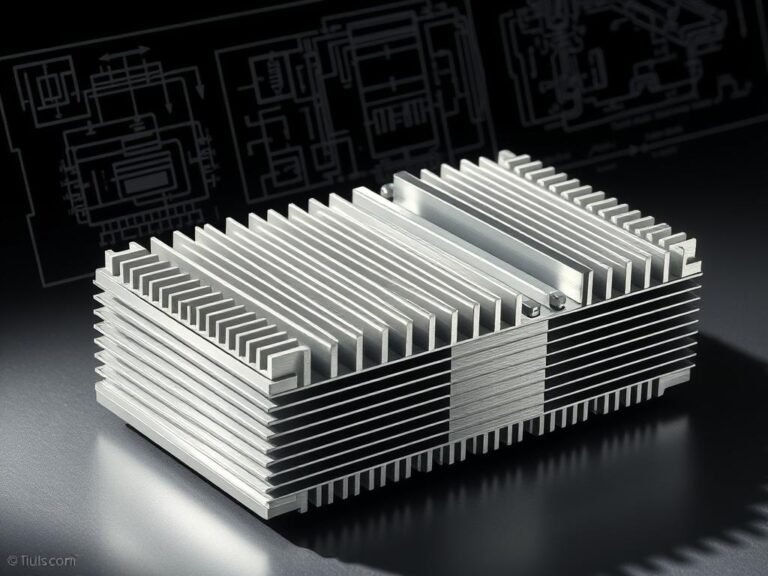The melting point of copper is very important in manufacturing. At 1085 °C, copper has special properties. These make it an important material in many production processes.
Knowing the melting point of copper is very important. It helps improve manufacturing processes. This enhances the quality, efficiency, and cost-effectiveness of part production.
By understanding the properties of copper, engineers and production managers can improve their work. They achieve better results.
In this article, we show how important the copper melting point is for metalworking and part production.
Why 1085 °C is critical
The melting point of copper at 1085 °C is very important. It influences how copper is used in the industry. This temperature is a key for processing and properties of copper.
Copper conducts heat very well. This is due to its melting point. It outperforms almost all other metals, only silver is better.
Copper in heat conduction
Copper conducts heat efficiently. Its structure allows it to distribute heat well. This is important for many applications.
Copper is versatile thanks to its high melting point and heat conductionIt withstands heat and distributes warmth well.

Industrial relevance
Copper is important in many industries. In the automotive industry, it makes heat-resistant parts. In electronics, it is essential for soldering processes.
Many industries utilize copper's temperature behavior. Modern technologies make good use of its special properties.
Examples show how important the melting point is for industry. By combining it with other materials and improving manufacturing, manufacturers can produce better products.
Processing optimization
When processing copper, the choice of tools and techniques is very important. Copper is soft and conducts heat well, which presents special requirements.
Tool selection for copper
Choosing the right tools is very important for efficient copper processing. Carbide and diamond-coated tools are ideal. They are hard and wear-resistant.
- Carbide tools for high wear resistance
- Diamond-coated tools for improved surface quality
- Optimal cutting geometries for reduced cutting forces
Avoidance of deformation
When machining copper, there are challenges due to its thermal expansion and deformability. Controlling the heat during machining can prevent deformations.
| Strategy | Description | Advantage |
|---|---|---|
| Cooling strategies | Use of coolants for temperature control | Reduced thermal deformation |
| Clamping concepts | Optimized clamping devices to minimize tension losses | Improved dimensional accuracy |
| Machining sequences | Optimized order of processing steps | Reduced risk of deformations |
By combining these strategies, the quality of copper processing can be significantly improved.
Comparison with alloys
Copper and its alloys differ in many properties. Brass and bronze, for example, have different melting points than pure copper. They also process differently.

Brass, a mixture of copper and zinc, melts at 900 to 940 °C. Pure copper melts at 1085 °C.
Copper vs. brass
Brass and copper are not only different in the temperature at which they melt. Brass is also easier to work with and has more strength. This makes it better suited for certain tasks.
- Pure copper is often preferred for electrical and thermal conductivity.
- Brass scores with its better workability and higher strength.
Melting point differences
The differences in melting points of copper and its alloys significantly affect processing. Alloys like tin or nickel can alter the melting point.
Knowing the melting points and properties of copper alloys is crucial for process optimization and material selection in modern manufacturing technology.
Here are some examples of melting points of copper alloys:
| Alloy | Melting point (°C) |
|---|---|
| Brass | 900-940 |
| Bronze | 850-1000 |
This information helps choose the right material for specific tasks. Sometimes pure copper is better, sometimes an alloy.
Practical Tips
The purity of copper affects its melting point and how well it can be processed. When choosing the best purity level, one must consider quality and costs.
Purity levels and their effects
Electrolytic copper with 99.991% purity conducts electricity very well. But recycled copper with dirt can affect the melting point and processing. Modern methods help determine the purity of copper and incorporate it into quality assurance processes.
Applications in electrical engineering
The high melting point of copper makes it ideal for electrical engineering. When designing copper components in electrical systems, temperature stability and strength must be considered.
Cost optimization in production
Energy costs, tool wear, and process times are important in copper processing. Better melting furnaces and heat treatment equipment can save energy and reduce costs.
By considering these points, manufacturing engineers and production planners can improve their processes. This increases the efficiency of their production.


